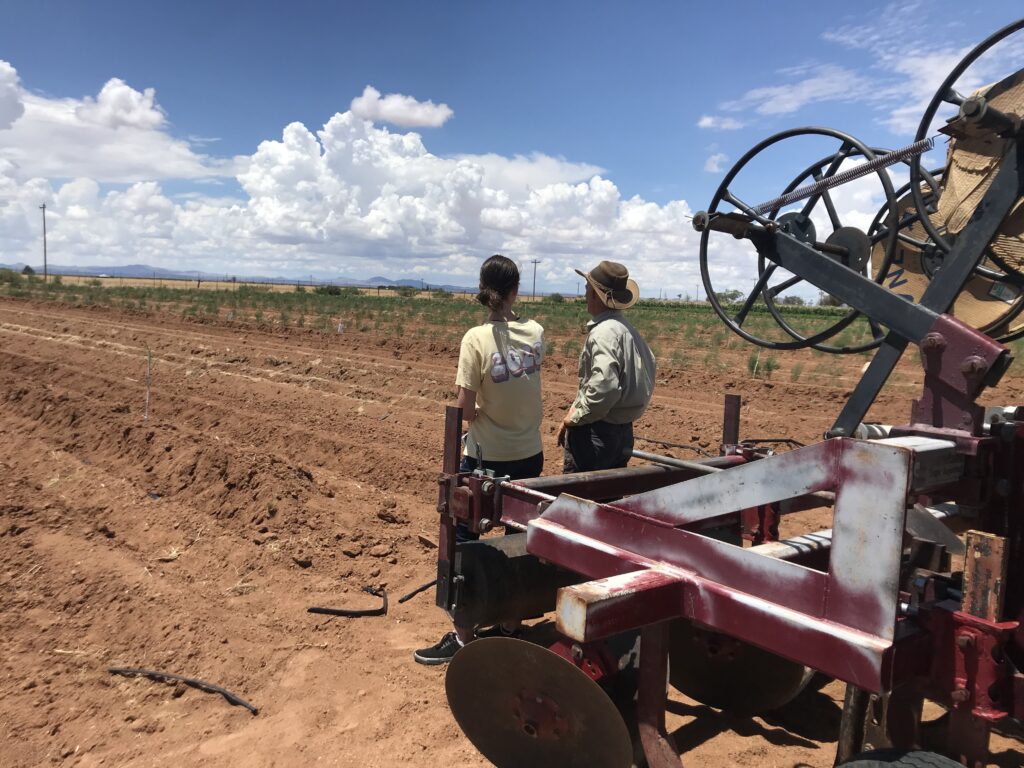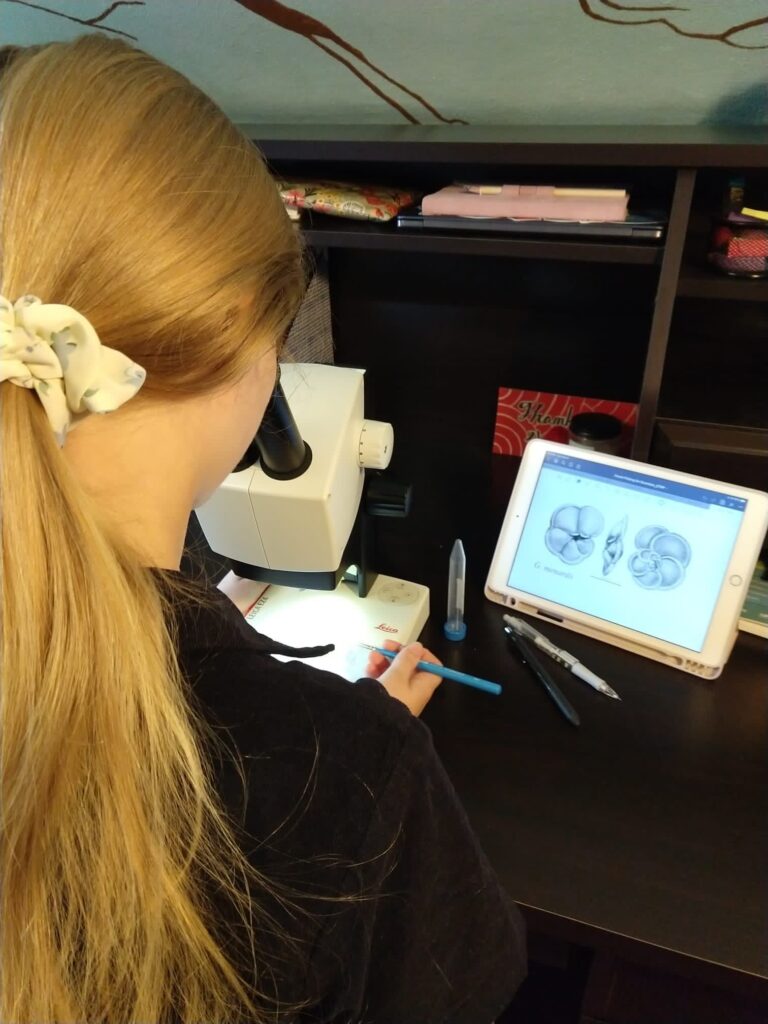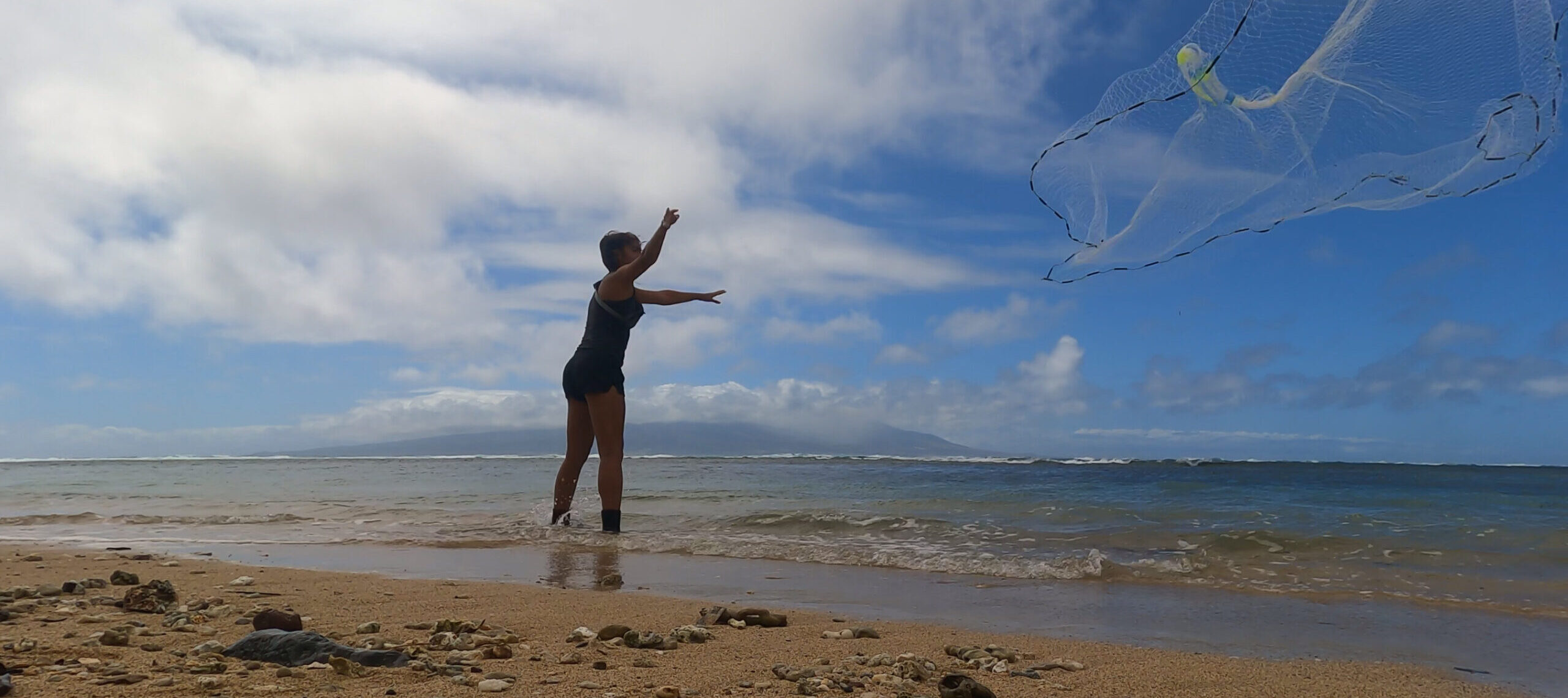More than 100 undergraduates explored new perspectives on environmental topics through 2021 HMEI summer internships
Princeton senior Demetra Yancopoulos could not get the words of the late oceanographer John Martin out of her mind after hearing them during a lecture last fall by Princeton geosciences professor Satish Myneni: “Give me half a tanker of iron, and I’ll give you an ice age.” Martin was referring to the idea that adding iron to the nutrient-rich yet biologically unproductive Southern Ocean surrounding Antarctica would result in a burst of marine life and remove vast amounts of carbon dioxide from the atmosphere.
“The immense force that the biogeochemical cycle of iron in the Southern Ocean applies to the climate struck me with just as much strength,” said Yancopoulos, who is a concentrator in civil and environmental engineering. “As a scientist, I could not resist the itch to make sense of this system. As an engineer, I could not help but wonder if such a system could someday be used to our advantage.”
Yancopoulos spent this past summer in Myneni’s lab exploring the Southern Ocean’s mysterious biogeochemistry as an environmental intern through the High Meadows Environmental Institute (HMEI). She designed and ran simulations on the seawater conditions most conducive to the formation of solids containing zinc, another crucial (though less-studied) marine nutrient in short supply in the Southern Ocean.
“As we understand the biogeochemical cycling of zinc in ocean systems, we refine our understanding of photosynthetic activity by marine biota, which directly impacts our global climate,” Yancopoulos said.
Yancopoulos was one of 127 Princeton undergraduates from across the University who participated in HMEI’s Environmental Summer Internship program this year, pursuing research related to critical environmental topics. Students worked closely, albeit in some cases remotely on account of COVID-19, with Princeton faculty and researchers, as well as with mentors from other academic institutions, government agencies, and NGOs. Students recently presented their research during HMEI’s 14th annual Summer of Learning Symposium.
[Applications for summer 2022 open Nov. 22.]


While Princeton junior Keenan Duggal’s internship at the Rocky Mountain Biological Laboratory in Gothic, Colorado, focused on climate change, he saw parallels to his interest in sustainable agriculture and food security. A molecular biology concentrator pursuing a certificate in environmental studies, Duggal is a member of the Jonikas Lab at Princeton, which is focused on improving agricultural yields through bioengineering.
This summer, Duggal worked in Colorado on a project led by C. Jessica E. Metcalf, associate professor of ecology and evolutionary biology and public affairs, studying how plant pathogens will adapt and spread under climate change conditions. “This internship was particularly interesting to me because it allowed me to explore the issue of sustainable agriculture from an entirely different approach,” said Duggal, who, like Yancopoulos, also participated in the environmental internship program in 2020.
Duggal and members of the research team hiked to four field sites every week — two of them located at an elevation of 12,631 feet — to record the spread of the fungus flax rust in experimental plots of the wildflower Lewis flax. He also led the team’s elevation transect project, scaling a different mountain each day to survey flax populations along the way and analyze the data back at camp.
“With the models created from the data I helped collect this summer, we should be able to better predict how climate change is going to affect the proliferation of plant and crop diseases,” Duggal said. “Understanding this could help us avoid food shortages by informing preemptive mitigatory action against future pathogen damages.”
Aneesha Manocha discovered environmentalism in an 8th-grade poetry class when she wrote about her fear of climate change. Now a junior in electrical and computer engineering, she focuses her research — with support from the HMEI Environmental Scholars Program — on identifying pathways to a low-carbon future by decarbonizing energy systems, modeling macro-energy systems, and developing energy policy.
This past summer, Manocha worked remotely developing power-system modeling methodologies in the Princeton ZERO Lab, as well as working with the India-based Centre for Social and Economic Progress on a related project to build a model for India’s decarbonization and development emissions. “Decarbonizing energy systems is essential to limit global warming,” she said. “I’m particularly interested in understanding low-carbon pathways and in modeling techniques to draw policy implications.”


Sophomores Amélie Lemay and Ethan Sontarp worked with Ian Bourg, assistant professor of civil and environmental engineering and HMEI, to develop molecular models for around 80 organic contaminants. Lemay and Sontarp then connected to the Cori supercomputer at the National Energy Research Scientific Computing Center to simulate the contaminant molecules in a water-air system and determine how strongly attracted each compound was to different phases of the system.
“It’s motivating to feel that our work will lead to tangible benefits for people who currently suffer the repercussions of tainted water,” said Lemay, a civil and environmental engineering concentrator who, along with Sontarp, is continuing the project this fall through an independent study course. “Knowledge of the behavior of these contaminants on the molecular level will allow for a better understanding of how they are transported in the environment and how we can remove them.”
“Using computer simulations opens us up to an understanding that we could not reach solely through experimentation,” said Sontarp, a geosciences concentrator pursuing a certificate in environmental studies. “I was interested in this internship because of its potential for environmental remediation, which I have done research on previously. I am always trying to take the research I conduct and place it in a global context so it can have a positive impact on people and the planet.”
Sophia Richter, a junior in ecology and evolutionary biology, combined her love of nature and coding to conduct a data analysis that identified 2,488 species worldwide at high risk of extinction without immediate habitat restoration. Richter worked as a member of a research group led by David Wilcove, professor of ecology and evolutionary biology and public affairs and HMEI, and was one of five environmental interns engaged in policy-focused projects within the Center for Policy Research on Energy and the Environment (C-PREE).
“My research identified the species with so little habitat they have no chance of recovering on their own,” said Richter, who, with her mentor Rebecca Senior, is submitting her results for publication in a peer-reviewed journal. “Identifying these species has the potential to — and hopefully will — help policymakers and NGOs redirect conservation efforts toward the species that are in the most dire need of habitat restoration and conservation actions.”
Senior Caroline Adkins worked at the intersection of agriculture and an interest in water security and conservation she has had since her first year of high school. Adkins worked in the lab of Sujit Datta, assistant professor of chemical and biological engineering, developing a model for simulating how hydrogels — polymer beads that can hold six-times their weight in water — may (or may not) retain water under different soil conditions. While hydrogels integrated into soil could increase crop yields with less irrigation, the technology has had mixed results in the field.
Adkins’ model suggested that the weight and cohesivity of soil affects how efficiently hydrogels absorb water. “Using my model, other researchers can now simulate how a hydrogel might behave under different soil loads, which could have a monumental impact on the agricultural industry, especially in areas of water scarcity,” said Adkins, a civil and environmental engineering concentrator who decided to focus on hydrogels for her senior thesis. “For me, this internship offered a brand-new perspective on an issue I have been studying for years, and I believe that this technology has tremendous potential,” she said.


Junior Noa Greenspan, an English concentrator pursuing a certificate in environmental studies, developed an interest in environmental journalism after taking the environmental studies course “Writing the Environment Through Creative Nonfiction” during her first year at Princeton. As an HMEI summer intern this past summer, she traveled around New Mexico for the National Center for Frontier Communities writing about issues affecting farmers and rural communities.
Greenspan learned and wrote about the origins of the frontier movement, state legislation to bolster rural equity in New Mexico, the effect of COVID-19 on local communities, and local and state efforts to alleviate some of the risks that young and beginning farmers face. “Getting to know community members was definitely the highlight,” said Greenspan, who is now working remotely with Wyoming Public Media on their podcast, “The Modern West.”
“I sat with the state legislators behind a rural-equity bill as they spoke about the challenges of navigating mental health care, understaffing and uneven broadband access in their hometowns. I loved meeting growers and learning about the innovation that went into creating their operations. I was struck by community farming efforts that have done so much to encourage beginning growers across the state,” Greenspan said.
“I’m so thankful that folks sat down with me, welcomed me onto their farms, Zoomed with me, and took the time to give me their perspectives,” she said.
Sloan Huebner, Kenzo Lacuarta and Jonathan Lin held summer internship positions in Princeton’s Behavioral Science for Policy Lab studying the interplay of individual and institutional responses to the COVID-19 pandemic — and how those dynamics may carry forward to climate change.
Lacuarta, a senior in ecology and evolutionary biology, employed evolutionary game theory to determine the ideal conditions under which public and private health insurance can cooperate. “I was interested in how people calculate tradeoffs when faced with risks that present themselves in different times and spaces,” he said.
Meanwhile, Huebner, a junior concentrating in sociology, and Lin, a sophomore in economics, developed surveys for households and stakeholders in the city’s governance system to gauge their perceptions of risk, climate impacts and policy. All three students traveled to New York City to distribute flyers for the household survey around various neighborhoods they had singled out based on susceptibility to climate change.
“Our surveys will provide insight into how New Yorkers perceive risks and whether those perceptions align with the priorities of the NYC government,” the team said. “It will be interesting to see how the short-term risk of COVID-19 affects people’s perceptions of the medium and long-term risks that come with climate change.”




